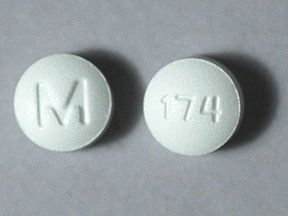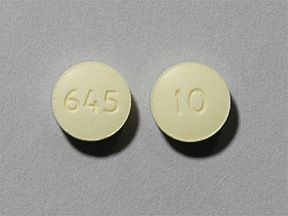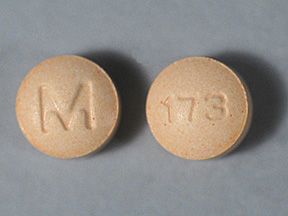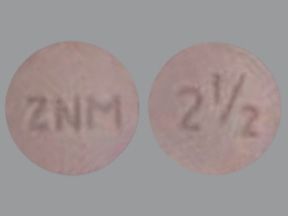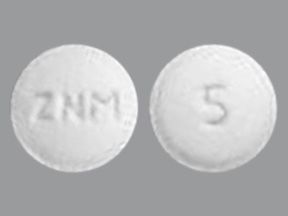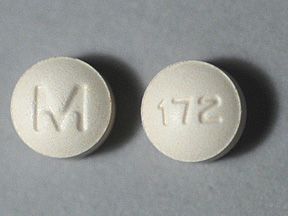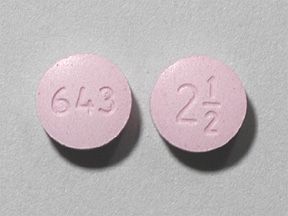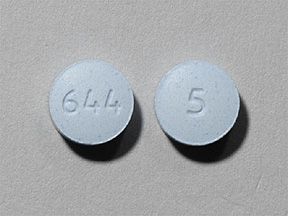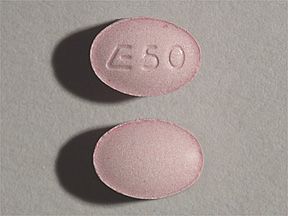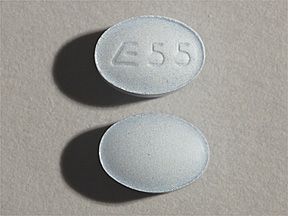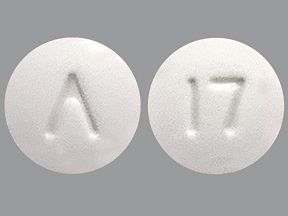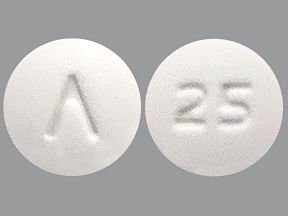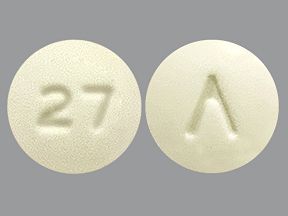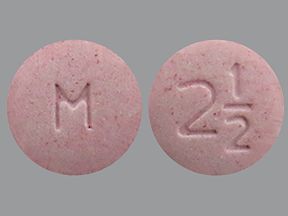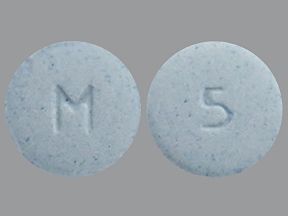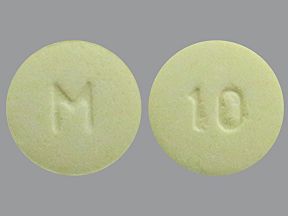Highlights for metolazone
- Metolazone oral tablet is available as both a generic and brand-name drug. Brand name: Zaroxolyn.
- The most common side effects of metolazone are constipation, dry mouth, diarrhea, headache, stomach pain, and blurred vision.
- Metolazone is used to treat high blood pressure (hypertension) and the buildup of excess fluid and salt in your body (edema).
- Low sodium and potassium levels warning: In rare cases, taking metolazone has suddenly led to low sodium levels (hyponatremia) or low potassium levels (hypokalemia) or both. If this occurs, your doctor may have you stop using metolazone.
- High nitrogen levels warning: Metolazone can cause high levels of nitrogen in your body (azotemia). If you have kidney disease, and experience high levels of nitrogen in your body or you’re having trouble urinating (or are not urinating as often), then your doctor will stop treatment with metolazone.
- Low blood pressure when standing warning: Metolazone can cause low blood pressure when you stand up (orthostatic hypotension).
Metolazone oral tablet is a prescription drug that’s available as the brand-name drug Zaroxolyn. It’s also available as a generic drug. Generic drugs usually cost less. In some cases, they may not be available in every strength or form as the brand.
Why it’s used
Metolazone is used to treat high blood pressure. It’s also used to treat the buildup of excess fluid and salt in your body. Metolazone may be taken as part of a combination therapy with other medications.
How it works
Metolazone belongs to a class of drugs called diuretics. A class of drugs is a group of medications that work in a similar way. They’re often used to treat similar conditions. Diuretics work by causing you to urinate more. This helps remove excess fluid and salt from your body. Removing this excess fluid and salt also helps to lower your blood pressure.
Metolazone oral tablet doesn’t cause drowsiness. However, it can cause other side effects. Mild side effects may go away within a few days or a couple of weeks. If they’re more severe or don’t go away, talk to your doctor or pharmacist.
More common side effects
The most common side effects that occur with metolazone include:
- abdominal pain
- blurred vision
- constipation
- diarrhea
- dry mouth
- headache
Serious side effects
Call your doctor right away if you have any of these serious side effects. Call 911 if your symptoms feel life-threatening or if you think you’re having a medical emergency.
- Allergic reactions. Symptoms can include:
- rash
- hives
- itching
- raised welts
- facial swelling
- fever
- difficulty breathing
- peeling or blistering skin
- Heart problems. Symptoms can include:
- irregular heartbeat
- chest pain
- Liver problems. Symptoms can include:
- yellowing of the whites of your eyes or your skin
- weakness or tiredness
- abdominal pain
- nausea
- vomiting
- Nerve problems. Symptoms can include:
- muscle pain or cramps
- numbness in your hands or feet
Disclaimer: Our goal is to provide you with the most relevant and current information. However, because drugs affect each person differently, we cannot guarantee that this information includes all possible side effects. This information is not a substitute for medical advice. Always discuss possible side effects with a healthcare provider who knows your medical history.
Metolazone oral tablet can interact with other medications, herbs, or vitamins you might be taking. An interaction is when a substance changes the way a drug works. This can be harmful or cause the drugs that you take to not work as well. To help prevent interactions, your doctor should manage all of your medications carefully. To find out how this drug might interact with something else you’re taking, talk to your doctor or pharmacist.
Examples of drugs that can cause interactions with metolazone are listed below.
Antibiotics
Taking certain antibiotics with metolazone can make metolazone not work as well. These include:
- methenamine
Other blood pressure drugs
These drugs can lower your blood pressure too much if taken with metolazone. They include:
- angiotensin-converting enzyme (ACE) inhibitors, such as:
- benazepril
- captopril
- enalapril
- enalaprilat
- fosinopril
- moexipril
- perindopril
- quinapril
- ramipril
- trandolapril
- angiotensin II receptor blockers (ARBs), such as:
- irbesartan
- losartan
- olmesartan
- telmisartan
- valsartan
- beta-blockers, such as:
- acebutolol
- atenolol
- betaxolol
- bisoprolol
- esmolol
- metoprolol
- nadolol
- nebivolol
- penbutolol
- pindolol
- propranolol
- timolol (systemic)
- calcium channel blockers, such as:
- amlodipine
- felodipine
- nicardipine
- nifedipine
- direct renin inhibitors, such as:
- aliskiren
- loop diuretics, such as:
- bumetanide
- furosemide
- indapamide
- torsemide
- potassium-sparing diuretics, such as:
- eplerenone
- spironolactone
- triamterene
Blood thinners (anticoagulants)
Your dose of these drugs may need to be increased if you’re taking them with metolazone. When you take them with metolazone, they may not work as well. These drugs include:
- warfarin
Corticosteroids
Taking these medications with metolazone may increase your risk for hypokalemia (low sodium). These include:
- prednisone
- prednisolone
- methylprednisolone
Diabetes drugs
Your dose of these drugs may need to be increased if you’re taking them with metolazone. When you take them with metolazone, they may not work as well. These drugs include:
- insulin
Diuretics
Taking these drugs with metolazone may increase your risk for low sodium levels (hypokalemia). These include:
- furosemide
Heart drugs
Metolazone may increase the effects of these drugs. These drugs include:
- digoxin
Mood stabilizers
Metolazone may increase the effects of these drugs. These drugs include:
- lithium
Pain drugs
Taking the following pain drugs with metolazone can make metolazone not work as well:
- aspirin
- nonsteroidal anti-inflammatory drugs (NSAIDs), such as:
- diclofenac
- ibuprofen
- indomethacin
- ketoprofen
- ketorolac
- meloxicam
- nabumetone
- naproxen
- piroxicam
- COX-2 Inhibitors
- celecoxib
Taking the following pain drugs with metolazone can lower your blood pressure too much:
- barbiturates, such as:
- butabarbital
- butalbital
- methohextal
- pentobarbital
- phenobarbital
- secobarbital
- thiopental
- narcotics, such as:
- codeine
- dihydrocodeine
- fentanyl
- hydrocodone
- hydromorphone
- levorphanol
- mepiridine
- methadone
- morphine
- opium
- oxycodone
- oxymorphone
- tramadol
Disclaimer: Our goal is to provide you with the most relevant and current information. However, because drugs interact differently in each person, we cannot guarantee that this information includes all possible interactions. This information is not a substitute for medical advice. Always speak with your healthcare provider about possible interactions with all prescription drugs, vitamins, herbs and supplements, and over-the-counter drugs that you are taking.
Metolazone oral tablet comes with several warnings.
Allergy warning
Metolazone can cause a severe allergic reaction. Symptoms can include:
- trouble breathing
- swelling of your throat or tongue
- hives
Don’t take this drug again if you’ve ever had an allergic reaction to it. Taking it again could be fatal (cause death).
Alcohol interaction
Drinking alcohol while you take this drug can increase your risk for low blood pressure when you stand up (orthostatic hypotension).
Warnings for people with certain health conditions
For people with anuria: If your body isn’t able to make urine (anuria), you shouldn’t take metolazone. Metolazone is removed from your body by your kidneys. If your kidneys aren’t working well, this will make it harder for your body to get rid of the drug.
For people with liver failure: You shouldn’t take metolazone if you have advanced stages of liver failure. Metolazone can cause changes to your electrolyte levels, which may bring on a hepatic coma in people with liver disease.
For people with diabetes: Metolazone can increase your blood sugar level. Talk to your doctor before using this drug if you have diabetes.
For people with gout: Metolazone can increase the amount of acid in your body. This can cause gouty attacks.
For people with kidney disease: Metolazone is eliminated from your body through your kidneys and can build up in your body if your kidneys aren’t working as well as they should. This can lead to toxicity. Tell your doctor if you have kidney disease or kidney damage.
For people with systemic lupus erythematosus: Taking metolazone may make your systemic lupus erythematosus worse.
Warnings for other groups
For pregnant women: Metolazone is a category B pregnancy drug. That means two things:
- Studies of the drug in pregnant animals haven’t shown risk to the fetus.
- There aren’t enough studies done in pregnant women to show the drug poses a risk to the fetus.
Speak with your doctor if you’re pregnant or planning to become pregnant. Metolazone should only be used during pregnancy if the potential benefit justifies the potential risk to the fetus.
Women who are breastfeeding: Metolazone may pass into breast milk and can cause serious adverse effects. Talk to your doctor before taking metolazone if you’re breast-feeding or plan to breastfeed.
For children: This medicine shouldn’t be used in people younger than 18 years.
This dosage information is for metolazone oral tablet. All possible dosages and forms may not be included here. Your doctor will tell you what dosage is right for you. Your dose, form, and how often you take it will depend on:
- your age
- the condition being treated
- how severe your condition is
- other medical conditions you have
- how you react to the first dose
Forms and strengths
Generic: metolazone
- Form: Oral tablet
- Strengths: 2.5 mg, 5 mg, 10 mg
Brand: Zaroxolyn
- Form: Oral tablet
- Strengths: 2.5 mg, 5 mg, 10 mg
Dosage for hypertension
Adult dosage (ages 18 years and older)
The usual dose for mild to moderate hypertension is 2.5–5 mg by mouth, once per day.
Child dosage (ages 0–17 years)
This medicine hasn’t been studied in children and shouldn’t be used in people younger than 18 years.
Dosage for edema
Adult dosage (ages 18 years and older)
The usual dose for edema is 5–20 mg by mouth, once per day.
Child dosage (ages 0–17 years)
This medicine hasn’t been studied in children and shouldn’t be used in people younger than 18 years.
Special considerations
People with kidney disease: If you have kidney disease, you may need a lower dose or you may need a different dosing schedule. Metolazone is removed from your body by your kidneys. It can build up in your body if your kidneys aren’t working as well as they should. This can lead to toxicity.
People with heart disease: If you have heart disease or decreased heart function you may need a lower dose or you may need a different dosing schedule.
Disclaimer: Our goal is to provide you with the most relevant and current information. However, because drugs affect each person differently, we cannot guarantee that this list includes all possible dosages. This information is not a substitute for medical advice. Always speak with your doctor or pharmacist about dosages that are right for you.
Metolazone oral tablet is used for short-term or long-term therapy. For swelling and water retention in your legs and arms, metolazone is used as short-term therapy. For high blood pressure, it’s used as long-term therapy. It comes with serious risks if you don’t take it as prescribed.
If you don’t take it at all: If you don’t take metolazone at all, your blood pressure or edema, or both, might not be controlled. This may lead to a heart attack, stroke, pain, or infection.
If you stop taking it suddenly: If you’re taking metolazone for high blood pressure and suddenly stop taking it, you may experience rebound high blood pressure. This is a sudden increase in your blood pressure after you stop taking your blood pressure medication. Symptoms of rebound hypertension include headache, confusion, chest pain, sweating, nausea, and vomiting.
If you don’t take it on schedule: If you don’t take metolazone according to the schedule for your doses, it may not work as well. In order for this drug to work, you need a consistent amount of it in your body at all times.
If you take too much: Taking too much metolazone can cause dizziness, drowsiness, fainting spells, low blood pressure when you stand up, changes in your electrolytes, and trouble breathing. If you think you have taken too much metolazone, you should go to the nearest emergency room or contact poison control right away.
What to do if you miss a dose: If you forget to take your dose, take it as soon as you remember, unless you remember just a few hours before the time for your next dose. Then only take one dose. Never try to catch up by taking two doses at once. This could result in toxic side effects.
How to tell if the drug is working: You may or may not be able to tell if metolazone is working; however, your doctor will check your blood pressure and fluid volume regularly to see if they’re at normal levels and controlled. You also may purchase a blood pressure monitor from your local pharmacy so that you can check your blood pressure yourself.
Keep these considerations in mind if your doctor prescribes metolazone oral tablet for you.
General
- Metolazone can be taken with or without food.
- Metolazone should be taken early in the day. This helps to avoid frequent urination throughout the night.
- Not every pharmacy stocks this drug. When filling your prescription, be sure to call ahead.
Storage
- Keep it between 68°F (20ºC) and 77°F (25°C).
- Don’t freeze metolazone.
- Keep it away from light and high temperature.
- Keep your drugs away from areas where they could get wet, such as bathrooms. Store these drugs away from moisture and damp locations.
Refills
A prescription for this medication is refillable.You should not need a new prescription for this medication to be refilled. Your doctor will write the number of refills authorized on your prescription.
Travel
When traveling with your medication:
- Always carry your medication with you, such as in your carry-on bag.
- Don’t worry about airport X-ray machines. They can’t hurt your medication.
- You may need to show airport staff the pharmacy label for your medication. Always carry the original prescription-labeled box with you.
- Don’t put this medication in your car’s glove compartment or leave it in the car. Be sure to avoid doing this when the weather is very hot or very cold.
Self-management
You may need to buy a blood pressure monitor. These can be purchased at most pharmacies.
Clinical monitoring
While you’re taking metolazone, your doctor will regularly monitor your electrolyte levels, blood sugar level, blood acid levels, calcium levels, heart function, liver function, and kidney function.
Sun sensitivity
Metolazone can make your skin more sensitive to the sun. This increases your risk of sunburn. Avoid the sun if you can. If you can’t, be sure to wear protective clothing and apply sunscreen.
Insurance
Many insurance companies require a prior authorization for this drug. This means your doctor will need to get approval from your insurance company before your insurance company will pay for the prescription.
There are other drugs available. Some may be better for you than others. Talk to your doctor about other options that may work for you.
Disclaimer: Healthline has made every effort to make certain that all information is factually correct, comprehensive, and up-to-date. However, this article should not be used as a substitute for the knowledge and expertise of a licensed healthcare professional. You should always consult your doctor or other healthcare professional before taking any medication. The drug information contained herein is subject to change and is not intended to cover all possible uses, directions, precautions, warnings, drug interactions, allergic reactions, or adverse effects. The absence of warnings or other information for a given drug does not indicate that the drug or drug combination is safe, effective, or appropriate for all patients or all specific uses.


